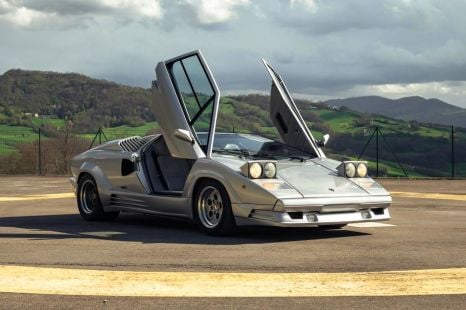

Anthony Crawford
1990 Lamborghini Countach review
5 Days Ago
The updated Qashqai builds on a solid base by bringing more value to an already stylish and sophisticated small SUV package.
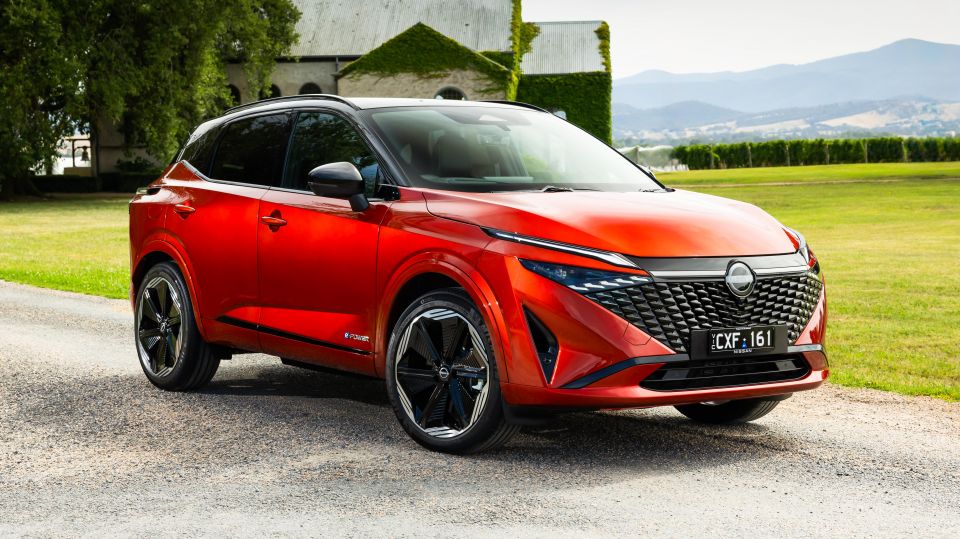
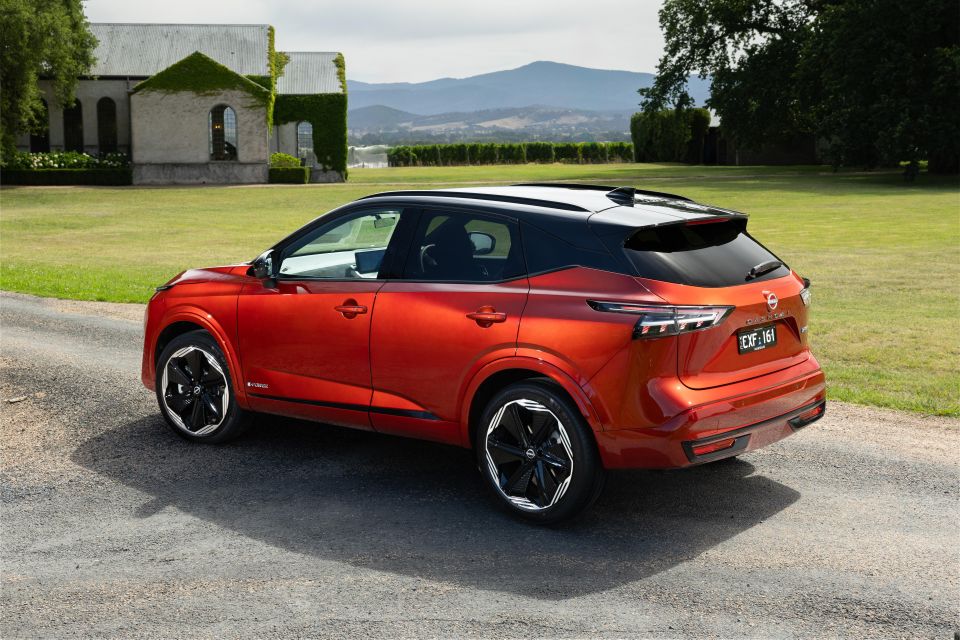

Quickly see how this car stacks up against its competition. Select any benchmark to see more details.
Where expert car reviews meet expert car buying – CarExpert gives you trusted advice, personalised service and real savings on your next new car.
In case you weren’t aware, Nissan is currently in a state of organisational turmoil, but you’d be forgiven for thinking otherwise in Australia.

The long-running Japanese brand was only recently touted to merge with arch-rival Honda due to slipping sales in the US and China, bringing into question the long-term future of Nissan as a manufacturer.
However, it’s a different story Down Under. Nissan is the third largest automotive OEM employer in Australia, and it also has the fifth biggest dealer network.
Sales of new Nissan vehicles spiked by 15 per cent to 45,284 vehicles here in 2024, while Honda managed just 14,092 deliveries. In the X-Trail, Patrol and Qashqai, Nissan also boasts some of the best-selling vehicles in their respective segments.
Speaking of the Qashqai, the popular small SUV has been given a timely facelift for 2025.
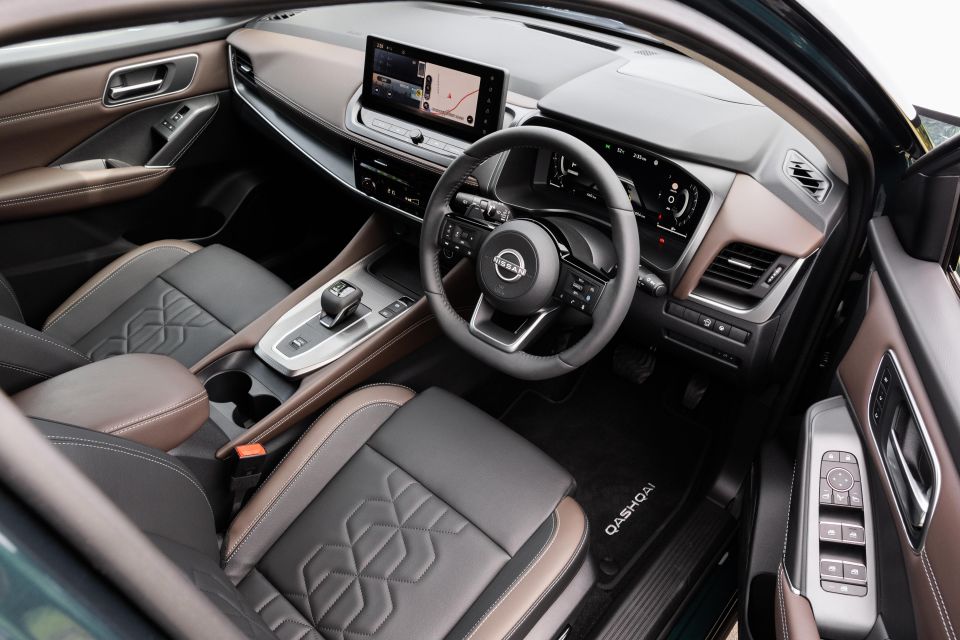
The range has been thoroughly overhauled, introducing fresh variants, all-new exterior styling, and upgraded standard tech across the lineup.
Despite the slew of enhancements, pricing remains similar to the pre-facelift model, ensuring the Qashqai remains competitive with both its traditional Japanese rivals and cheaper Chinese challengers.
Is it enough to distract new car buyers from the chaos upstairs? Read on to find out.
The Qashqai range has expanded for 2025, with Nissan now offering six variants. At the bottom end, the base ST is $1725 cheaper than before thanks to an introductory pricing offer that runs until April 30.
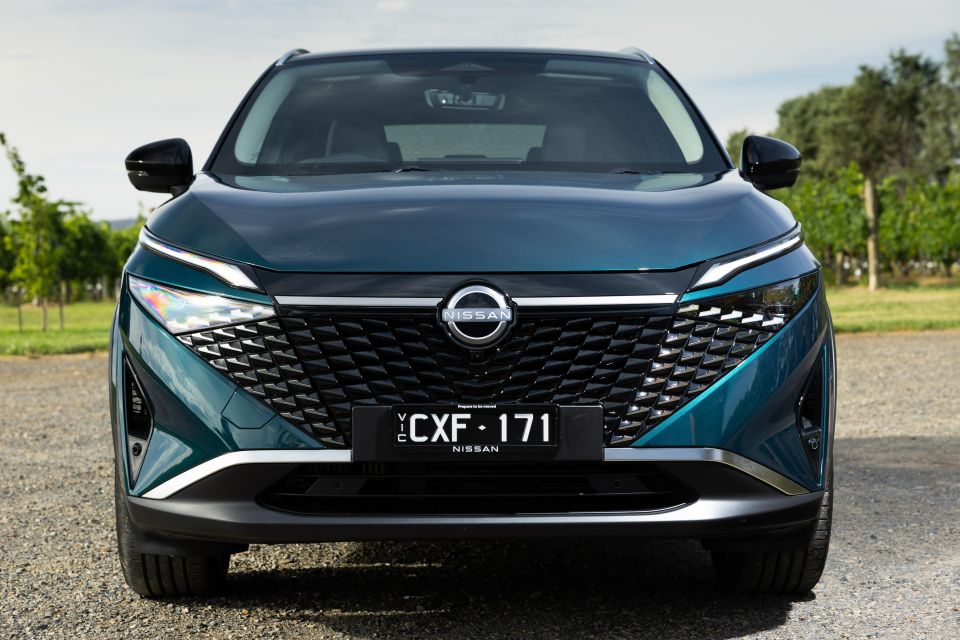
Savings can also be had on the ST-L, which likewise opens cheaper than the equivalent ST+ it replaces.
Further up the range, higher-spec Ti-L variants come in $275 dearer, while the all-new N-Design e-Power flagship wears a price tag of $54,365 before on-road costs.
That price spectrum is par for the course when compared to small SUV rivals, although the N-Design is right at the top end with the Honda ZR-V e:HEV (excluding the Hyundai Kona Electric and Volkswagen T-Roc R).
| Model | Price before on-roads |
|---|---|
| Nissan Qashqai ST | $32,665 (until April 30) |
| Nissan Qashqai ST-L | $37,665 (until April 30) |
| Nissan Qashqai Ti | $42,965 |
| Nissan Qashqai Ti-L | $48,165 |
| Nissan Qashqai Ti-L e-Power | $52,365 |
| Nissan Qashqai N-Design e-Power | $54,365 |
To see how the Nissan Qashqai lines up against the competition, check out our comparison tool
Nissan has gone all-out with the interior of the updated Qashqai, from materials to technology and design.
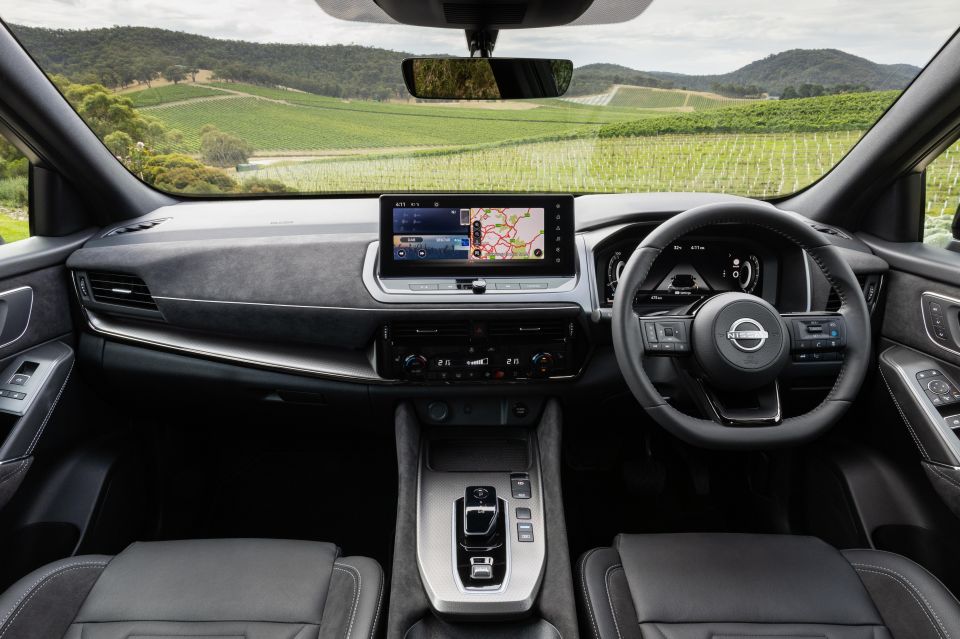
Exhibit A: Qashqai N-Design. I’ve never seen so much Alcantara in a mainstream vehicle, and the cabin looks stunning as a result. Flagship variants are all about wow-factor, and the N-Design has that in spades.
The soft black fake-suede material coats the dash, door cards and centre tunnel in the Ti-L and top-spec N-Design, giving those versions a distinctly premium feel. The N-Design adds seat inserts on top of that.
White stitching breaks up the sea of black, elevating the space further.
Elsewhere, the uppermost interior panels are all soft to the touch despite their plastic construction, and there’s a nice metallic finish surrounding the gear selector. Throw in a dash of gloss black plastic here and there, and it’s to understand why you’d mistake the Qashqai for a model from one of the big three European manufacturers.
Stepping down to the considerably cheaper Ti doesn’t rob you of much interior ambience, either.
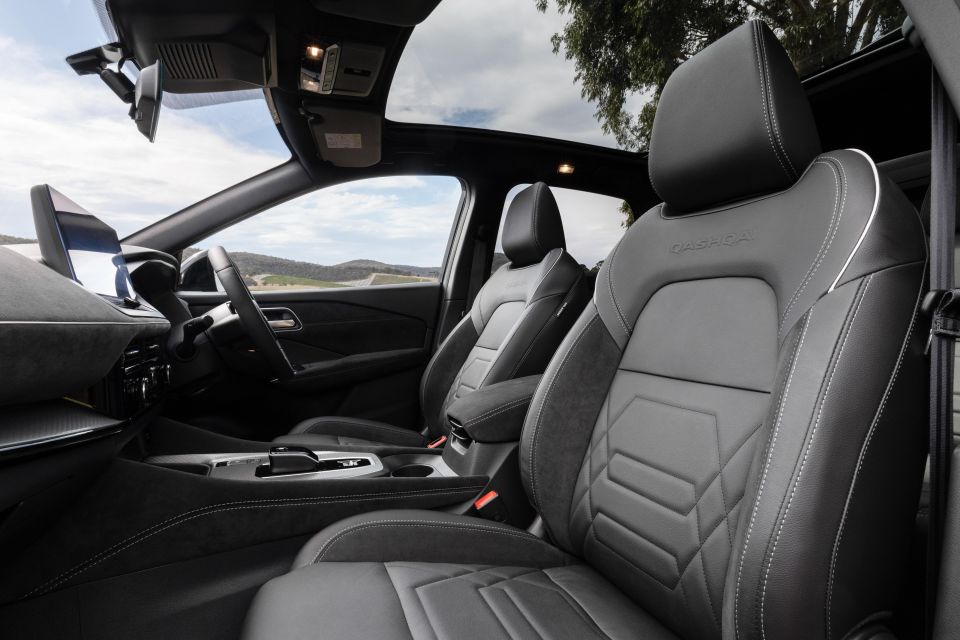
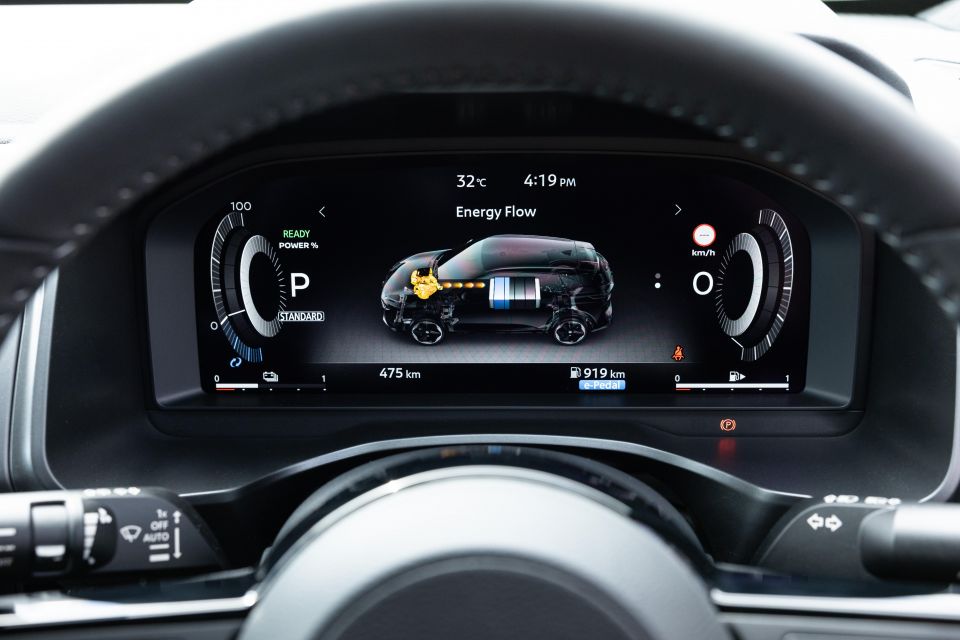
The mid-spec variant we sampled misses out on all the Alcantara, but it’s replaced by equally classy leather and leatherette finishes.
The dual-tone black/brown colour scheme is an absolute winner, perfectly complemented by a green exterior finish on our tester.
Even the bargain basement ST gives a good account of itself, gaining a synthetic leather steering wheel as part of the most recent update.
If I could change one thing about the look and feel of the refreshed Qashqai, it would be the stumpy shifter in e-Power models, which is rattly and unpleasant to operate. That’s being picky, though.
The seats in both the Ti and N-Design are comfortable with ample cushioning, matching the upmarket appearance of the cabin. Having said that, they’re on the slimmer side, which may cause issues for larger drivers.
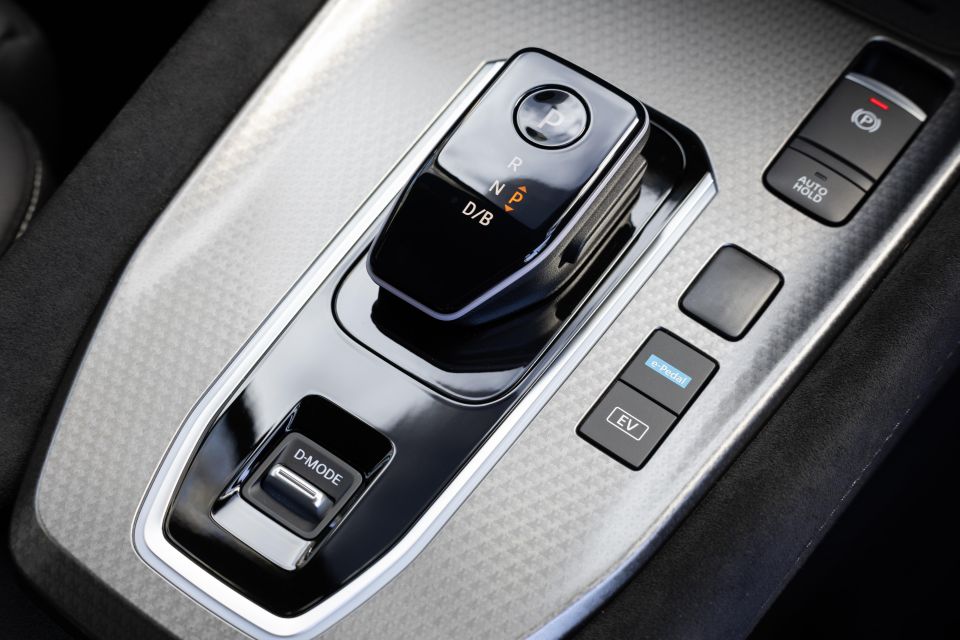
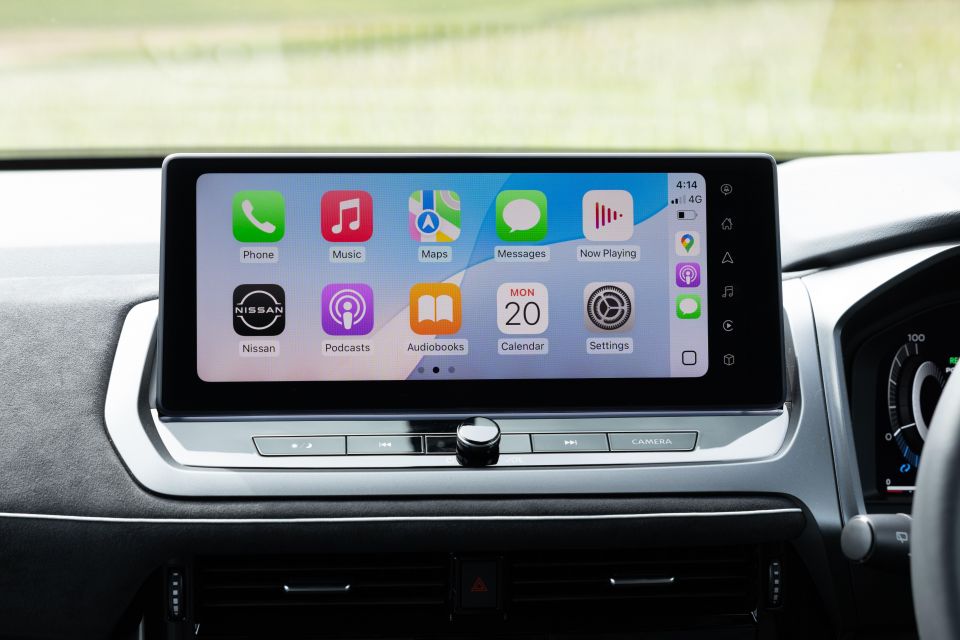
Likewise, there’s a limited amount of height adjustment available. That may seem like an obscure complaint, but the Qashqai has a low sloping roofline that compromises headroom, especially up front.
For that reason, drivers topping 6’5″ are forced to tolerate an awkward seating position in the Qashqai… if they fit at all. Electric driver’s seat adjustment and three-stage front seat heating is available from the Ti trim level up.
It’s a big jump from ST-L to Ti, the latter of which also gains a heated steering wheel.
Having said that, you don’t have to stump up the big bucks for a decent infotainment system, as Nissan’s premier 12.3-inch touchscreen is standard right across the range.
With quick loading speeds and crisp graphics, the screen is a pleasure to operate and user-friendly, too.
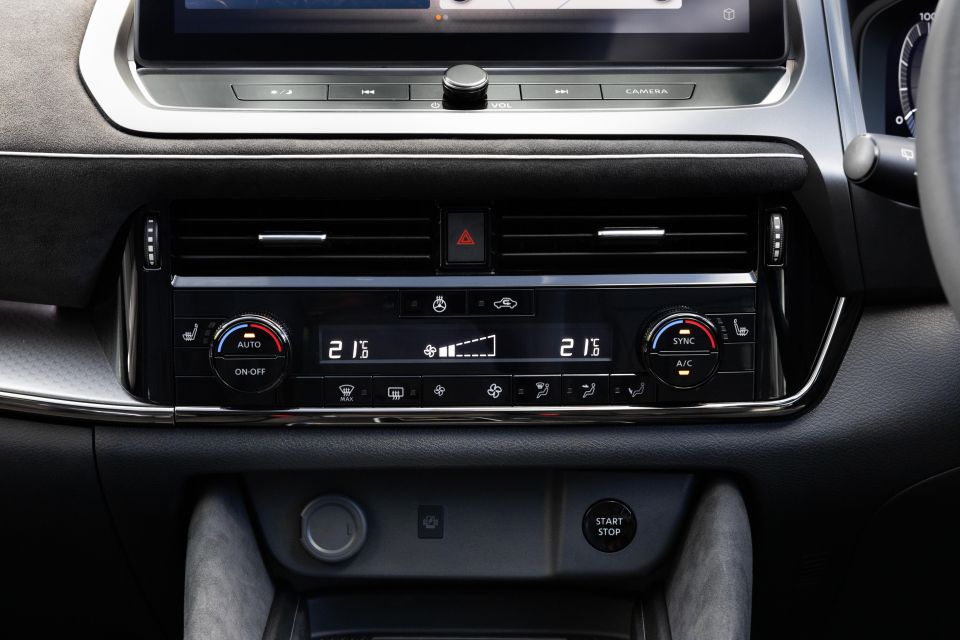
That’s partly because the system isn’t over-cluttered with superfluous features, instead just housing basic apps for audio, navigation, and vehicle settings.
Physical shortcut buttons for audio output and the safety cameras are located directly below the screen, while there are fixed shortcut icons along the right side of the screen for home, navigation, audio, and smartphone mirroring. Simple but effective.
One glaring omission from the spec sheet is Google integration, which was introduced in overseas models with this latest update. It would’ve been refreshing to have a reason to occasionally pivot away from constant use of Apple CarPlay.
With that said, the native navigation system shouldn’t be ignored. Maps fill the screen nicely and there are handy shortcuts for petrol stations, restaurants, cafes and parking areas.
Still, many are likely to skip Nissan’s offering in favour of Waze or Apple Maps, especially considering wireless smartphone mirroring is now standard across the Qashqai range.
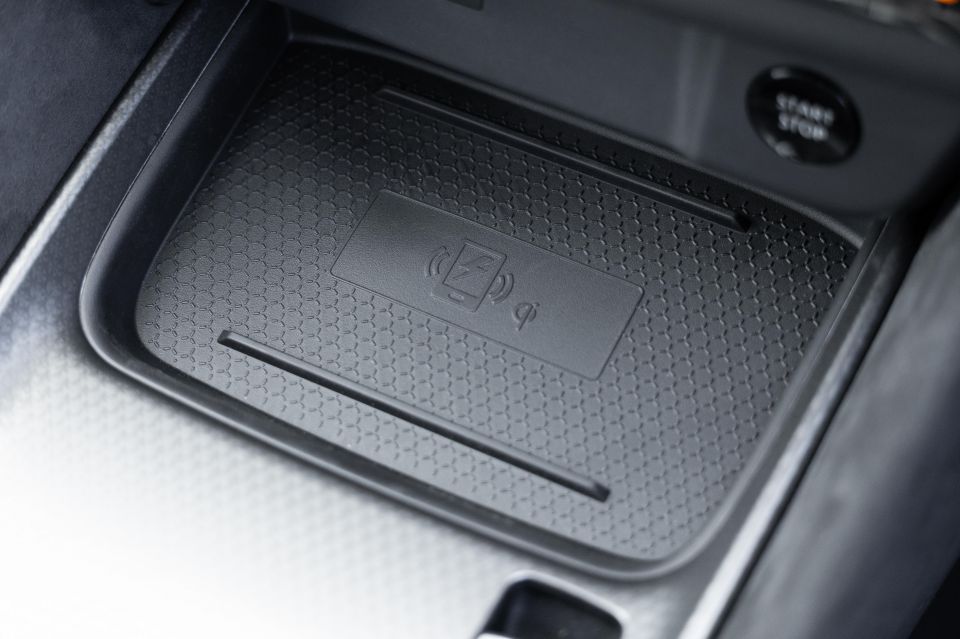
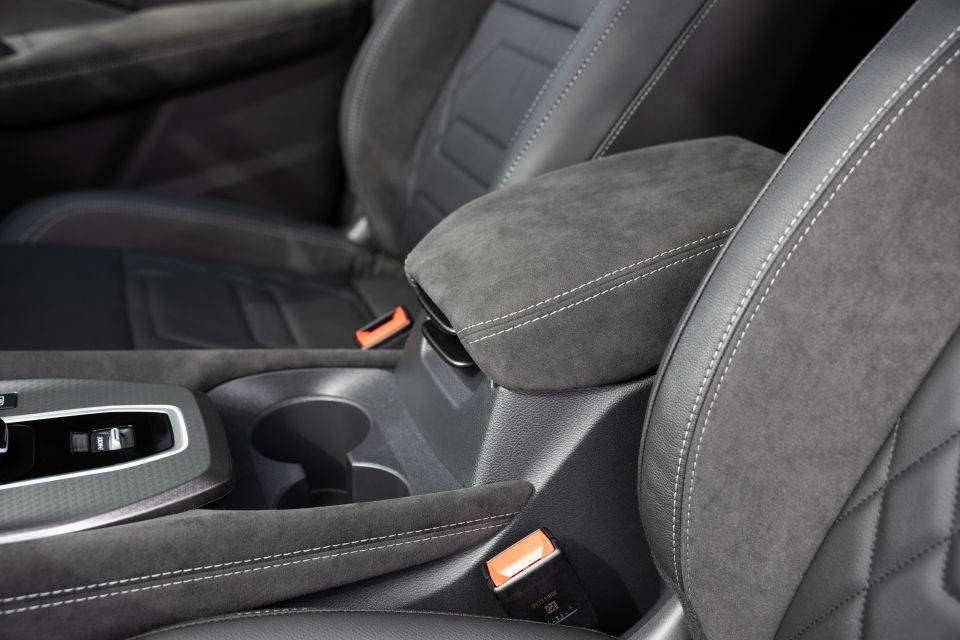
All Qashqais also feature a digital instrument cluster, which varies in size depending on variant. We sampled the 12.3-inch version equipped to the Ti, Ti-L, and N-Design, and I found it easy to get along with.
Options for customisation of the readouts are plentiful, especially in the e-Power, and the display plays with three-dimensional graphics in a way that’s fun and futuristic.
That’s not to say Nissan has gone overboard in modernising the cabin of the Qashqai. A physical climate control panel remains, fit with old-fashioned buttons and switches.
And in a first for Nissan in Australia, the Qashqai now features Connected Car Services (CCS), which gives owners instant access to their vehicle through the Nissan Connect app, with the ability to access key health and status information, trip history and any vehicle disturbances, including theft and towing alerts.
The interior of the facelifted Qashqai nails the brief from a comfort and technology standpoint, although storage up front is lacking.
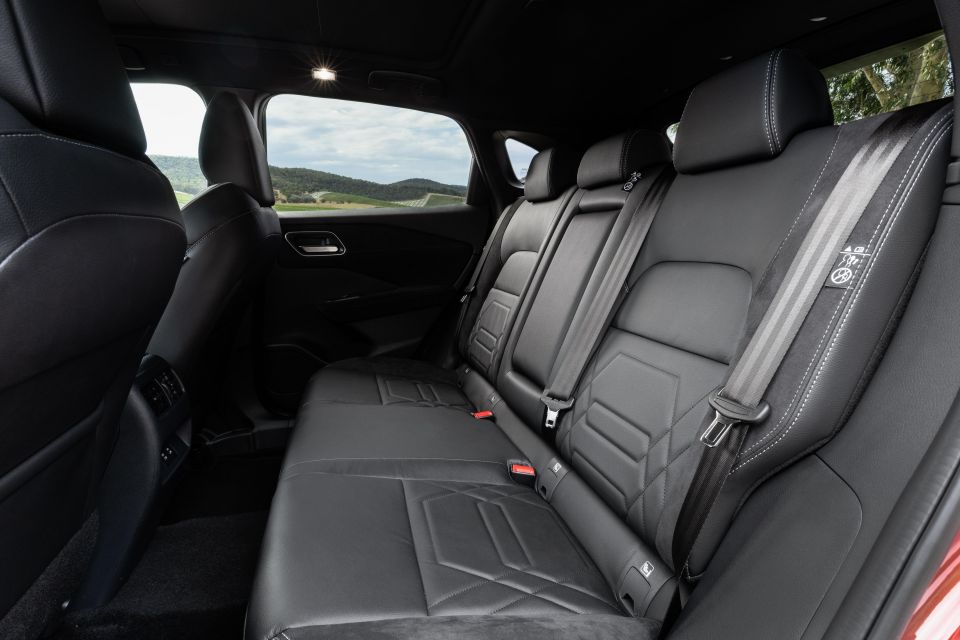
The door bins are on the tight side, while only half the usual glovebox space is usable. There’s no dedicated holder for sunglasses, and don’t bother trying to wedge your chunky drink bottle into the centre cupholders.
A deep centre console with dual USB-C outlets makes up for some of the storage shortcomings. All variants bar the base ST offer a wireless phone charger under the centre stack.
Scarce storage in the front row is offset by a roomy second row that sets the Qashqai apart from its rivals. Not only is there plenty of legroom for leggy types, but the soft seat backs are kind on pressing knees.
Further, there’s enough headroom for anyone south of 6’3″, at least in variants without the sunroof.
The rear bench is slightly reclined for extra comfort, although each individual seat lacks lateral support. Squeezing three in the back is a viable option, as the transmission tunnel sits lower than most other small SUVs.
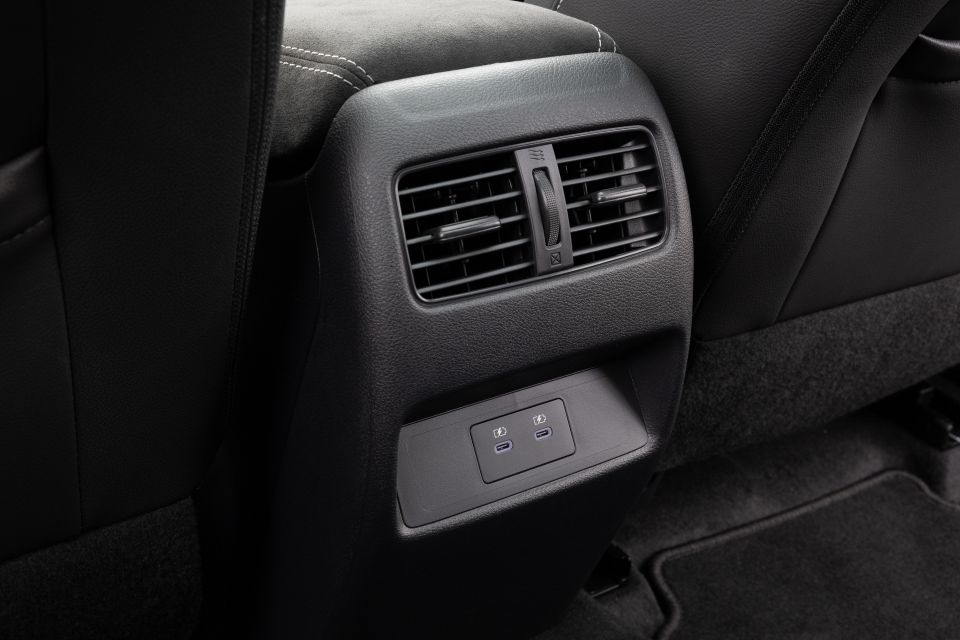
For comfort alone, the Qashqai absolutely blows cramped competitors like the Mazda CX-30 out of the water.
There’s no lack of amenities either. Each and every new Qashqai features rear USB-C outlets, dual air vents, map pockets, and lighting.
Storage solutions include deep, round door bins, armrest-integrated cupholders, and a small nook carved out of each upper door panel.
The practicality proposition is bolstered by a boot that ranks amongst the biggest in the small SUV segment.
e-Power variants offer a middle-of-the-road 404 litres, but that expands to 504 litres for variants without the hybrid powertrain. The Qashqai gets a space-saver spare tyre.
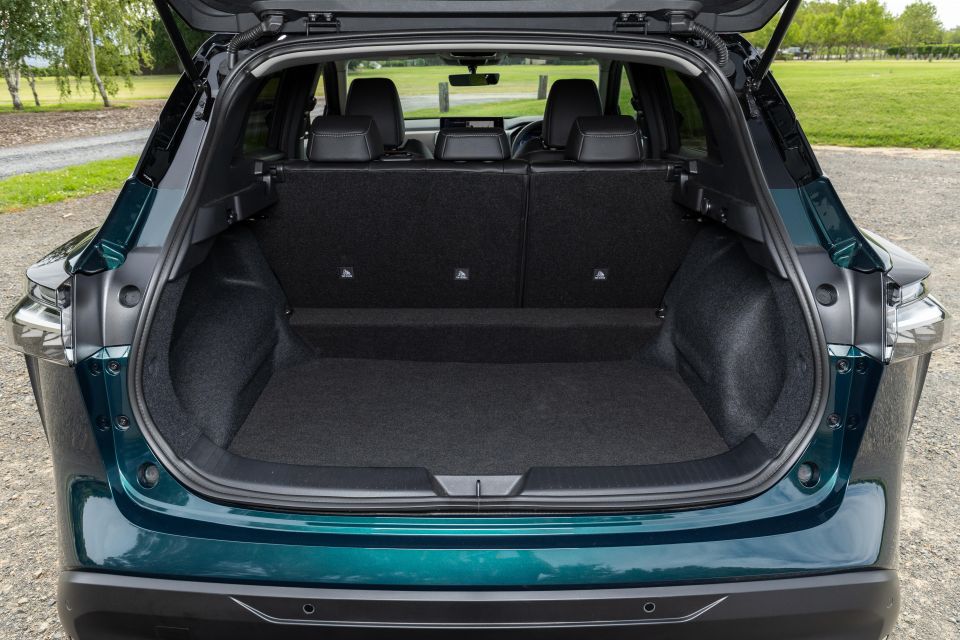
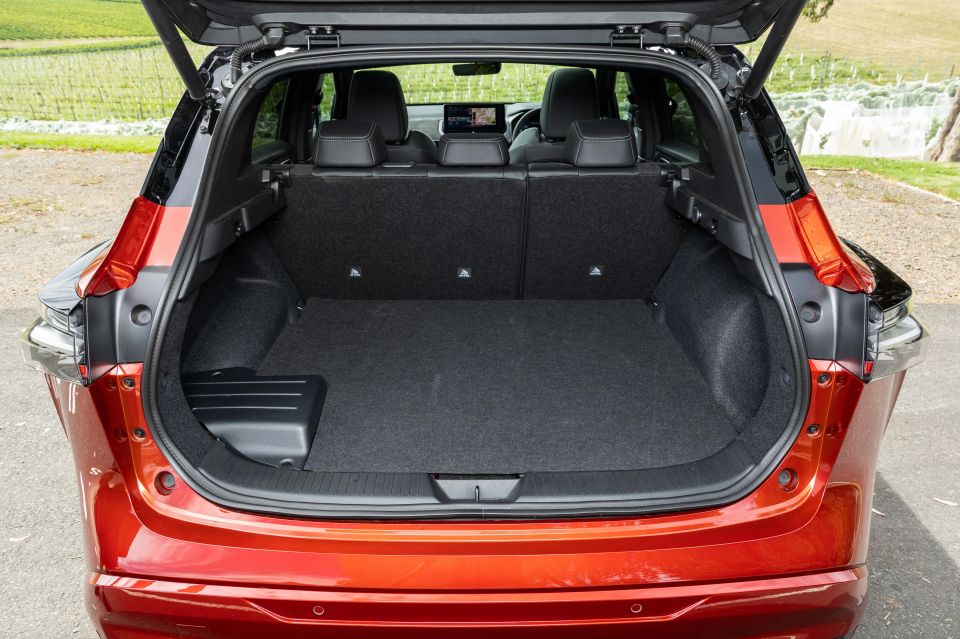
For context, the Subaru Crosstrek has a cargo capacity of just 291L, and the Mazda CX-30 isn’t much better (317L).
The boot in the Qashqai is more than just a large open space. It houses a 12V power source, bag hooks, and recessed side pockets, a trio of top-tether child seat anchors, and is well lit.
Loading bulky items isn’t especially onerous as the load lip is manageable, while the rear bench folds flat in 60/40 fashion for extra luggage space. Mind you, there is a vertical step between the boot floor and rear bench when folded.
| Dimensions | Nissan Qashqai |
|---|---|
| Length | 4425mm |
| Width | 1836mm |
| Height | 1625mm |
| Wheelbase | 2665mm |
| Cargo capacity | 404-504L (rear seats up) 1328-1447L (rear seats folded) |
To see how the Nissan Qashqai lines up against the competition, check out our comparison tool
The Qashqai continues to be offered with the choice of a turbocharged four-cylinder petrol engine or a turbo three-cylinder paired with Nissan’s e-Power technology.
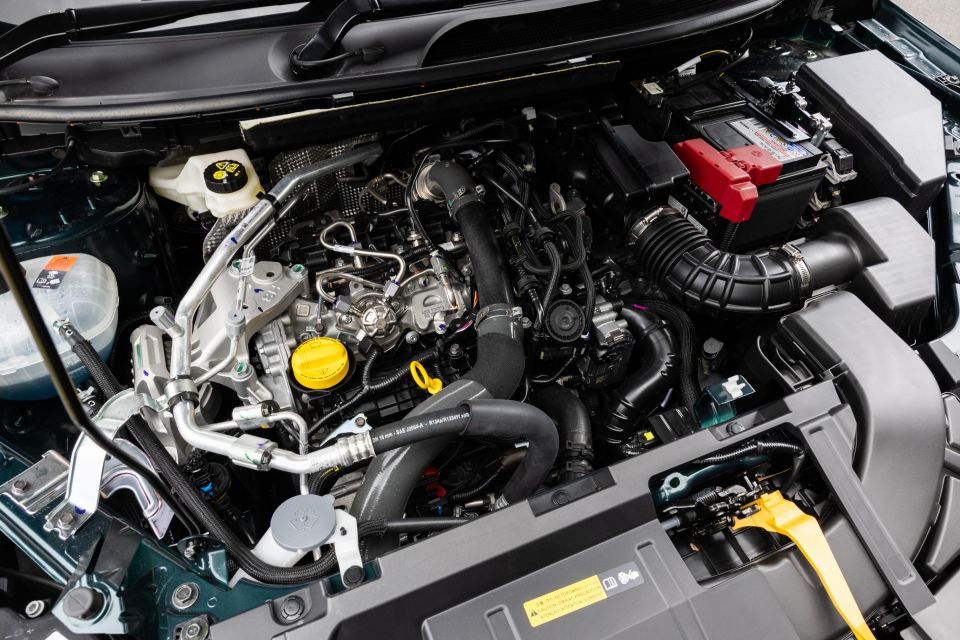
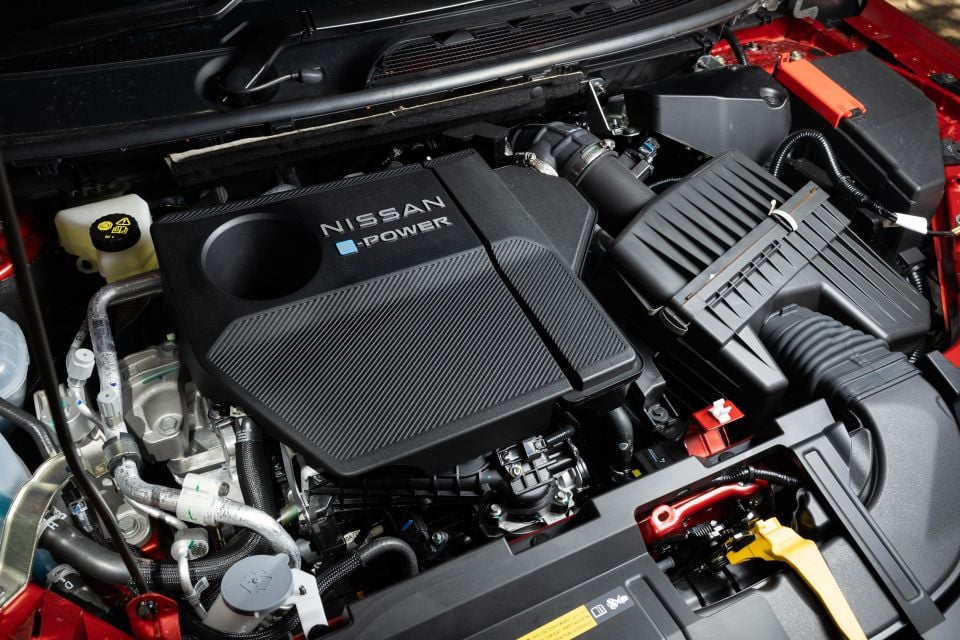
In addition to an old-fashioned internal combustion engine, e-Power models feature a front-mounted electric motor that directly drives the front wheels – there’s no e-4orce all-wheel drive system available for the Qashqai.
Although both powertrains have been directly carried over from the pre-update Qashqai, the new model is slightly more fuel-efficient in e-Power guise.
| Model | Qashqai | Qashqai e-Power |
|---|---|---|
| Engine | 1.3L 4cyl turbo-petrol | 1.5L 3cyl turbo-petrol |
| Engine power | 110kW | 116kW |
| Engine torque | 250Nm | 250Nm |
| Electric motor | – | Single motor, front axle |
| Total system power | – | 140kW |
| Total system torque | – | 330Nm |
| Battery | – | 2.1kWh li-ion |
| Transmission | CVT | – |
| Drive type | Front-wheel drive | Front-wheel drive |
| Fuel consumption (claimed) | 5.8-6.1L/100km | 4.8L/100km |
| Fuel consumption (as tested) | 6.8L/100km | 5.2L/100km |
| Fuel tank capacity | 55L | 55L |
| Fuel requirement | 91 octane unleaded | 91 octane unleaded |
| CO2 emissions | 134-138g/km | 112g/km |
| Emissions standard | Euro 5 | Euro 6 |
To see how the Nissan Qashqai lines up against the competition, check out our comparison tool
Regardless of variant, the Qashqai remains a refined and uncomplicated small SUV on the road.
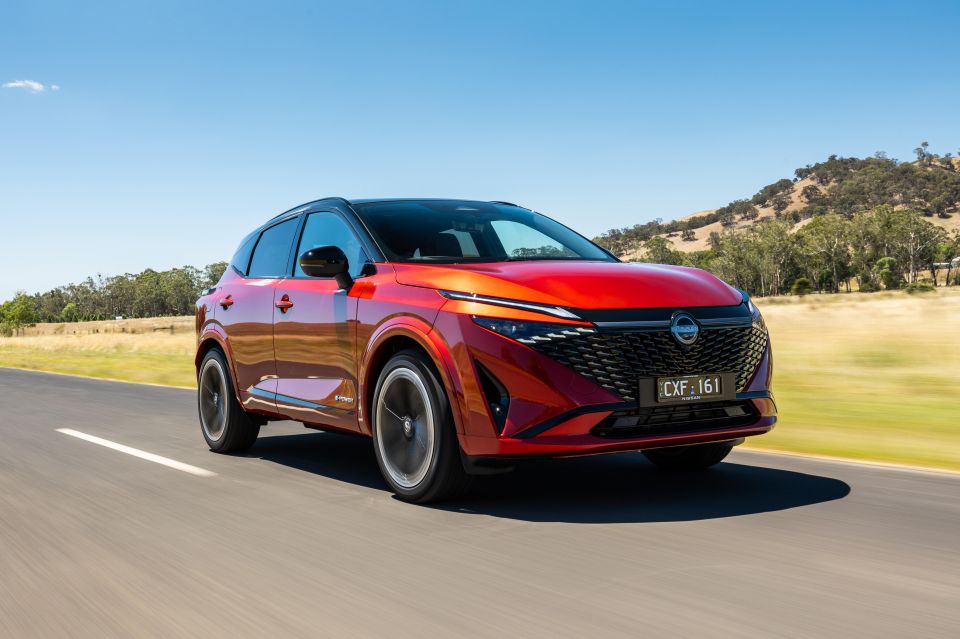
Where expert car reviews meet expert car buying – CarExpert gives you trusted advice, personalised service and real savings on your next new car.
Both powertrains have been directly carried over from the pre-update Qashqai, and that’s no bad thing.
In N-Design e-Power form, the Qashqai is almost whisper quiet. Even under full load, the hybrid system is adept at providing power without pushing the needle on the decibel meter, which is exactly what you want from a small SUV.
Every now and then you’ll hear the petrol motor fire up to charge the battery, but the noise emitted is muted and inoffensive.
EV mode allows you to sneak around in complete silence at lower speeds, all while saving some money at the pump.
That’s not to say the Qashqai e-Power is going to save the planet. We saw an average fuel consumption of 5.2L/100km, which is good but not quite Toyota hybrid good.
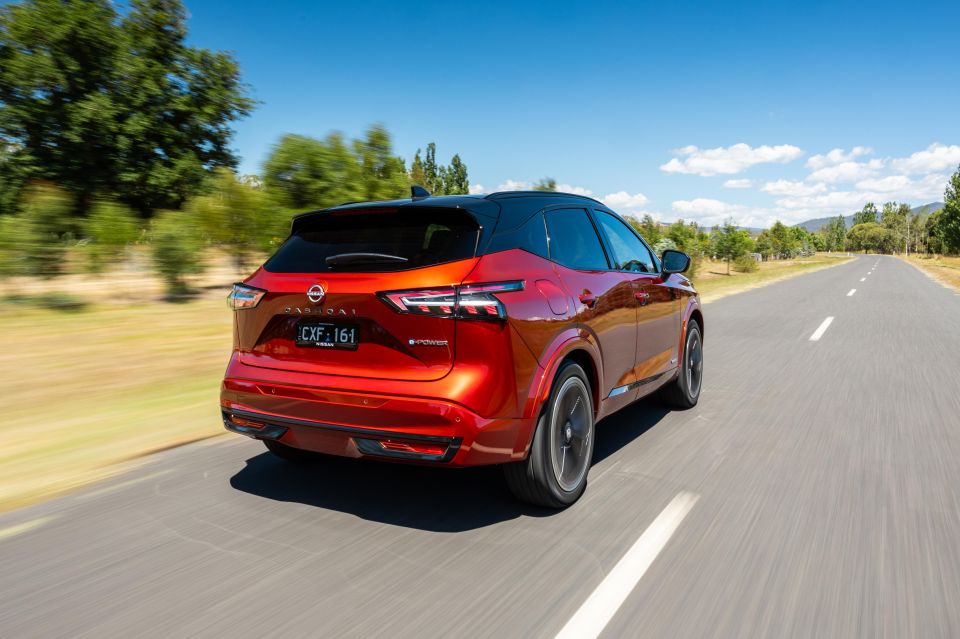
And it’s not much better than the standard turbo-petrol Qashqai, which can return between 6-7L/100km. In that sense, you buy the e-Power for how it drives, not for groundbreaking fuel-efficiency, so the payback period for its price premium won’t be short.
Nissan brags that its e-Power technology offers an electric driving experience, and it’s not far from the mark.
Acceleration is smooth and linear, just like an EV. The Qashqai is peppy enough at city speeds, and doesn’t really run out of puff right up to 100km/h.
Single-pedal driving is included as part of the package, and it’s a well-sorted system. When e-Pedal mode is active, the Qashqai offers smooth regenerative braking – none of the jerkiness I’ve experienced in some EVs.
Having said that, the Qashqai won’t come to a complete stop under regenerative braking, so some use of the brake pedal is required.
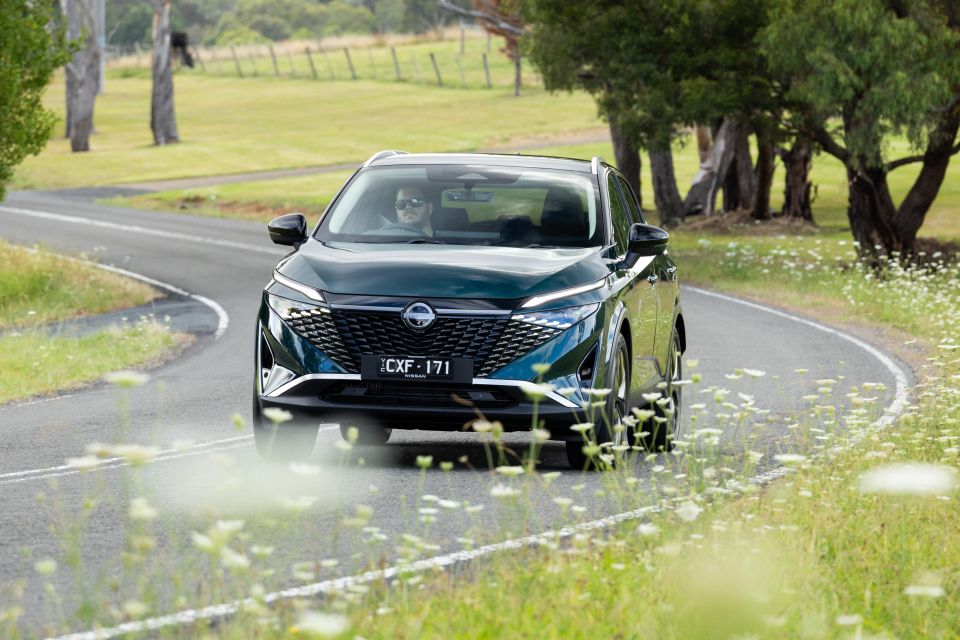
By contrast, combustion versions of the Qashqai are just about as quiet as the e-Power in most situations.
We tested the petrol Ti alongside the e-Power, and the similarly between the two powertrains from a refinement standpoint is remarkable.
Stepping into the Ti, engine noise is a lot more pronounced when you mash the right pedal, but the ‘lesser’ model is by no means noisy or strained.
The introduction of a CVT doesn’t worsen the package much either. The transmission responds well to throttle inputs, providing smooth and efficient progress.
Performance from the 1.3-litre turbo four-cylinder is adequate but noticeably worse than the e-Power setup. Indeed, this was the greatest compromise that I noticed when comparing the two.
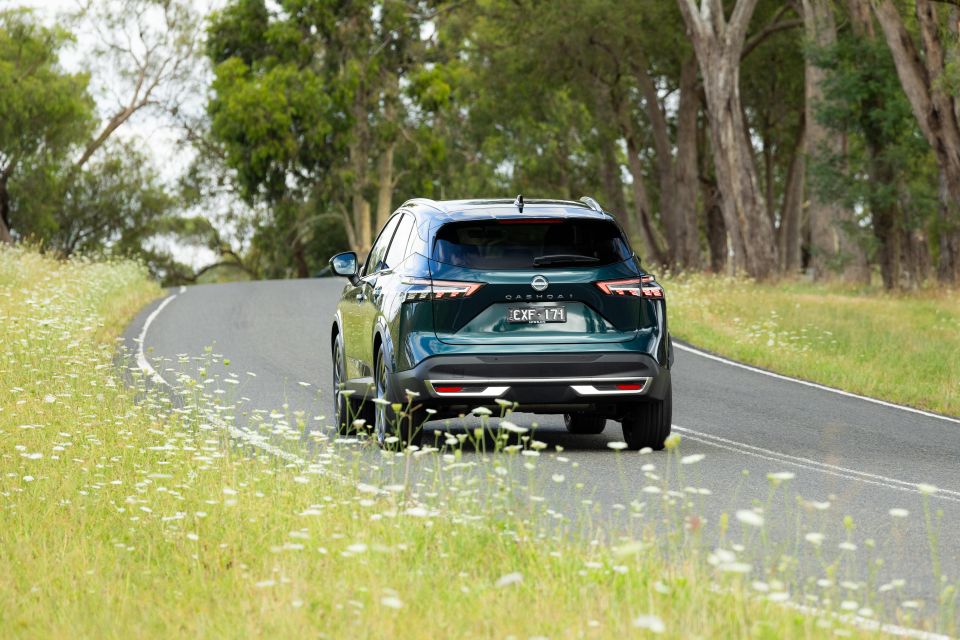
Powertrain aside, the Qashqai adeptly balance sporty dynamics and ride comfort to deliver a thoroughly enjoyable driving experience.
It feels compact and nimble, with good body control and plenty of grip. Outside the grip window exists understeer, not that you’re likely to face that in everyday driving.
Although the Qashqai is right at home on twisty country roads, don’t expect motoring thrills. The electric steering setup is numb and vague, devoid of much feel.
The tradeoff for tight handling is a firm ride, but even the roughest Victorian country roads weren’t intolerable throughout our test. The worst trait I experienced was jiggling over coarse surfaces – the Qashqai is never crashy or floaty.
Wind and tyre noise both remain muted at all times. In this sense, the Qashqai feels far more like a premium large SUV than the mainstream small variety.
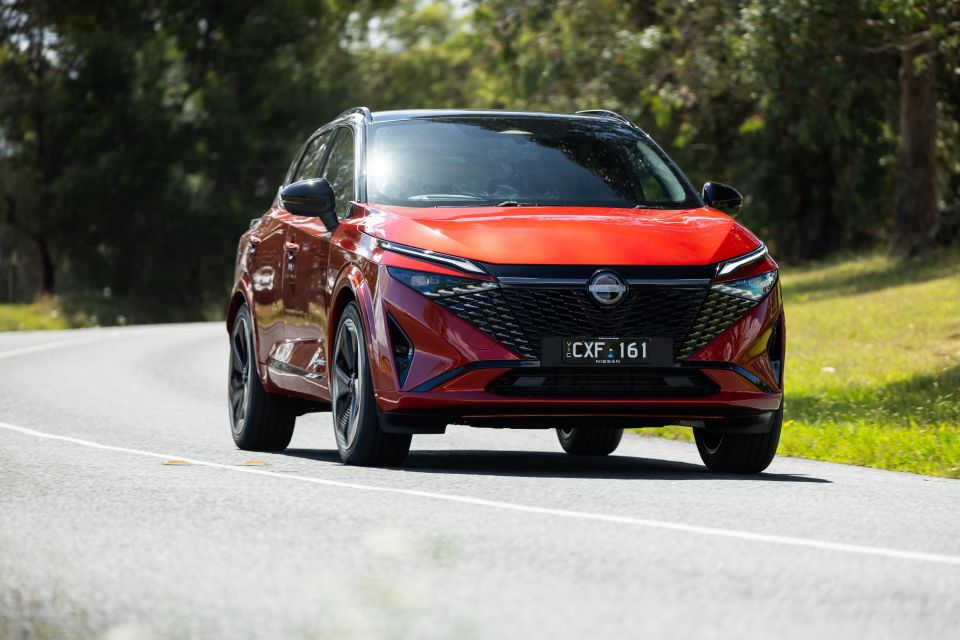
That’s backed up by decent visibility all round – you have a great sense of where other cars are on the road.
The combination of good visibility and compact dimensions has always made the Qashqai easy to park, but it’s now even easier thanks to an upgraded camera suite across the range.
All variants feature a 12.3-inch infotainment touchscreen, which displays high-resolution surround-view camera footage in crisp quality.
On the highway, a comprehensive suite of safety technology comes into its own. Bucking the trend of inane beeps and over-the-top visual warnings, Nissan’s advanced driver assist systems (ADAS) are refreshingly well-calibrated.
The Qashqai does adaptive cruise control as well as any vehicle in this segment, matching the likes of Toyota for ease of use and reliability. Once your parameters are set the car essentially drives itself, maintaining ideal road positioning with active lane centring.
To see how the Nissan Qashqai lines up against the competition, check out our comparison tool
There are five trim levels available in the Qashqai range.
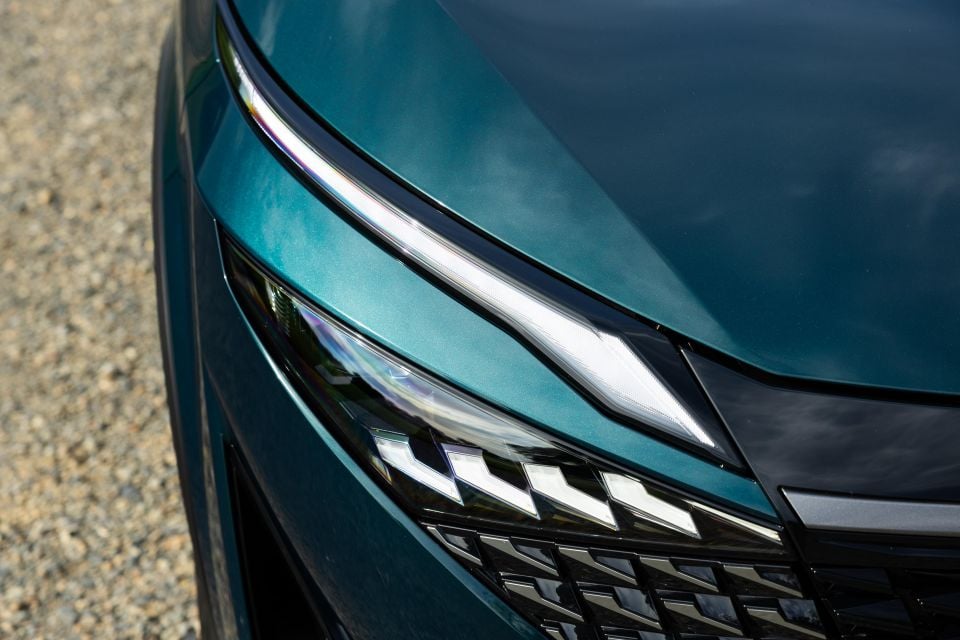

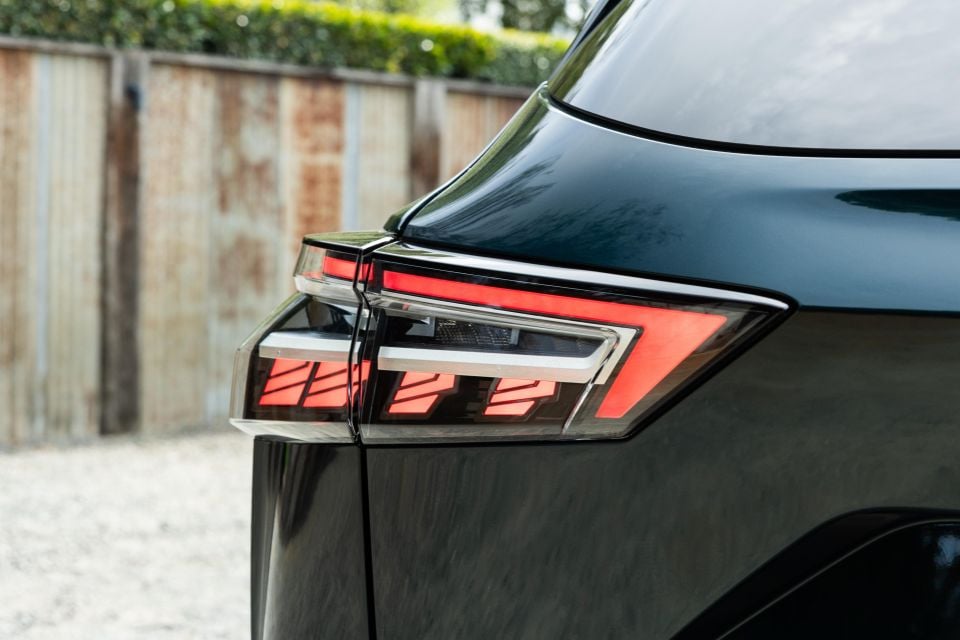
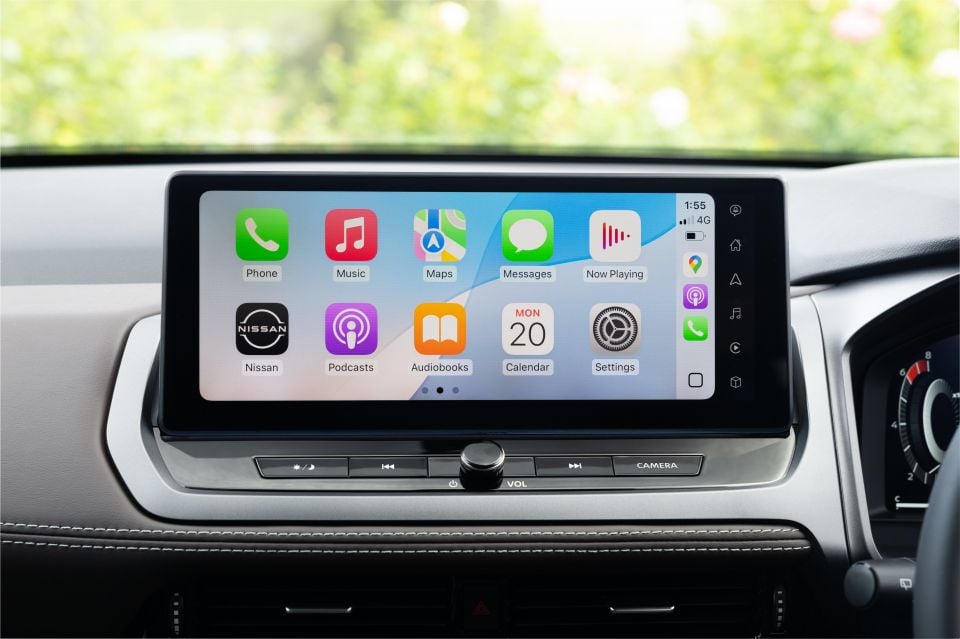
2025 Nissan Qashqai ST equipment highlights:
ST-L adds:
Ti adds:
Ti-L adds:
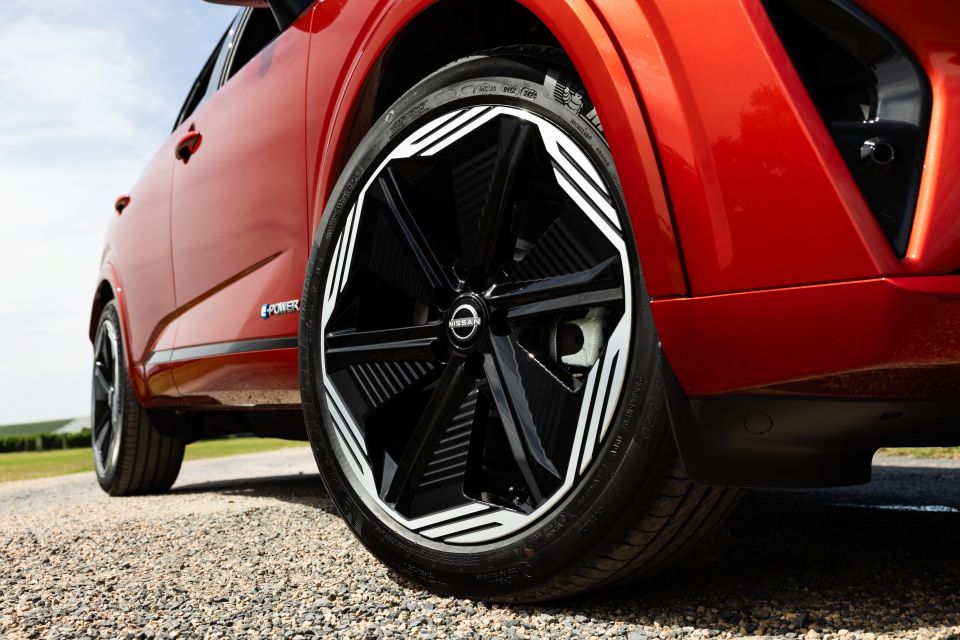

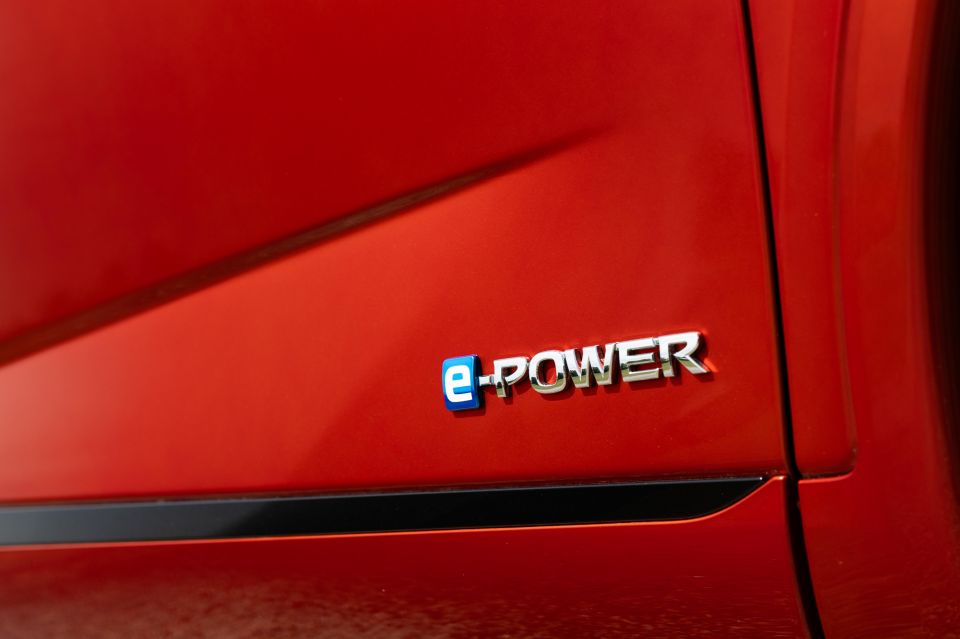
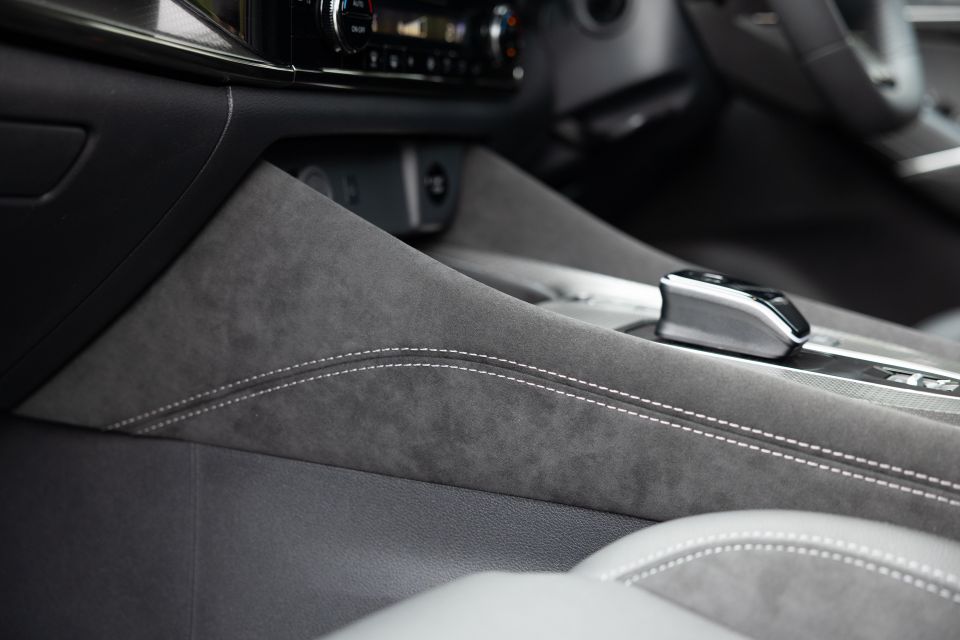
N-Design adds:
To see how the Nissan Qashqai lines up against the competition, check out our comparison tool
The Nissan Qashqai has a five-star ANCAP rating, based on Euro NCAP testing in 2021.
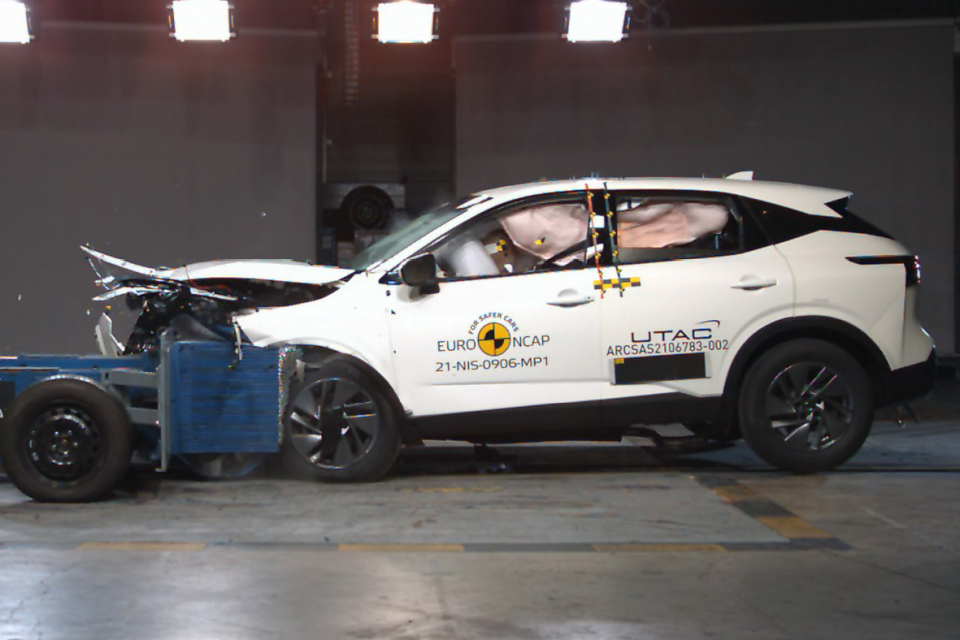
| Category | Nissan Qashqai |
|---|---|
| Adult occupant protection | 91 per cent |
| Child occupant protection | 93 per cent |
| Vulnerable road user protection | 74 per cent |
| Safety assist | 97 per cent |
Standard safety features include:
Qashqai ST-L adds:
Qashqai Ti adds:
Qashqai Ti-L adds:
To see how the Nissan Qashqai lines up against the competition, check out our comparison tool
The Qashqai is the first model to be launched with Nissan’s new ownership program, coined ‘Nissan More’. As such, it’s covered by a 10-year, 300,000km vehicle warranty, the longest of any carmaker in the country, if you service with a Nissan dealer.
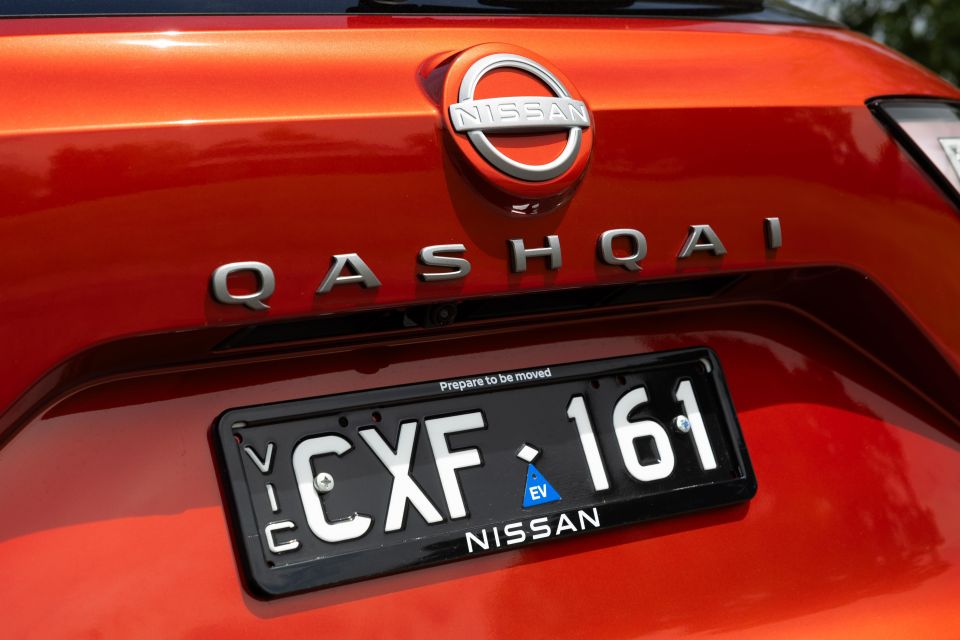
| Warranty and Servicing | Nissan Qashqai |
|---|---|
| Warranty | 10 years, 300,000km (conditional) |
| Roadside assistance | 10 years |
| Service intervals | 12 months or 15,000km |
| Capped-price servicing | 5 years |
| Total capped-price service cost | $1995 |
To see how the Nissan Qashqai lines up against the competition, check out our comparison tool
With the updated Qashqai, Nissan has ticked all the boxes for a successful model facelift.
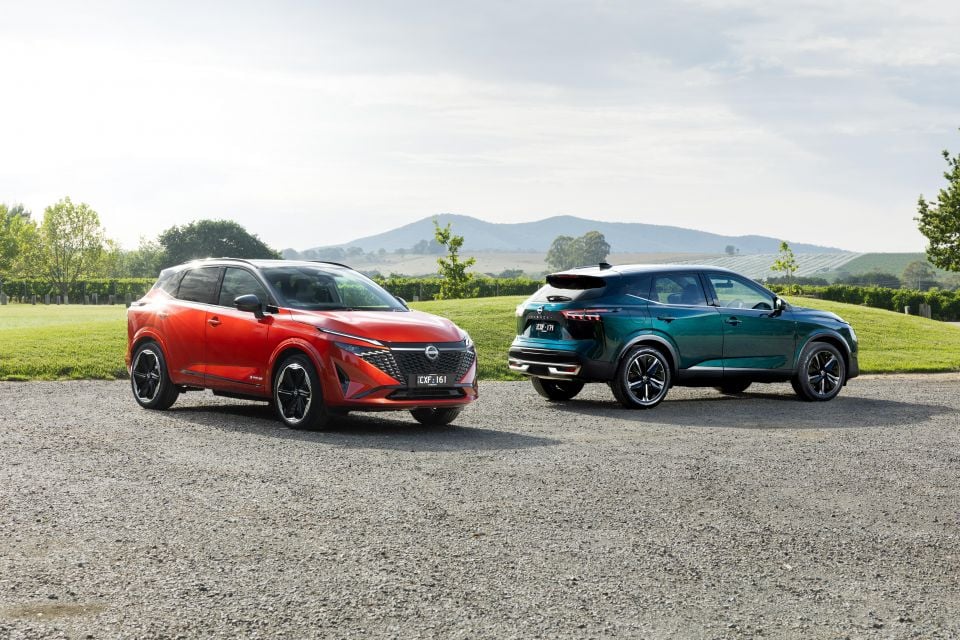
The solid foundations of the pre-update model remain intact. It’s still quiet, refined and comfortable, with more practicality than can reasonably be expected of a small SUV.
And at the same time, Nissan has managed to address the Qashqai’s shortcomings, modernising both the interior and exterior through design tweaks and a generous injection of fresh technology.
The base grade is now a far better buy with its upsized 12.3-inch infotainment system and faux leather trimmings, while the Alcantara-rich N-Design is a fitting flagship.
Indeed, there’s value right across the range. At least in the short-term, the entry-level ST is an attractive proposition at $32,665 before on-road costs. Each step up the range brings worthwhile extras, and both powertrains have merit.
Regular petrol versions are significantly more affordable than their e-Power siblings, and only narrowly trail on efficiency and refinement.
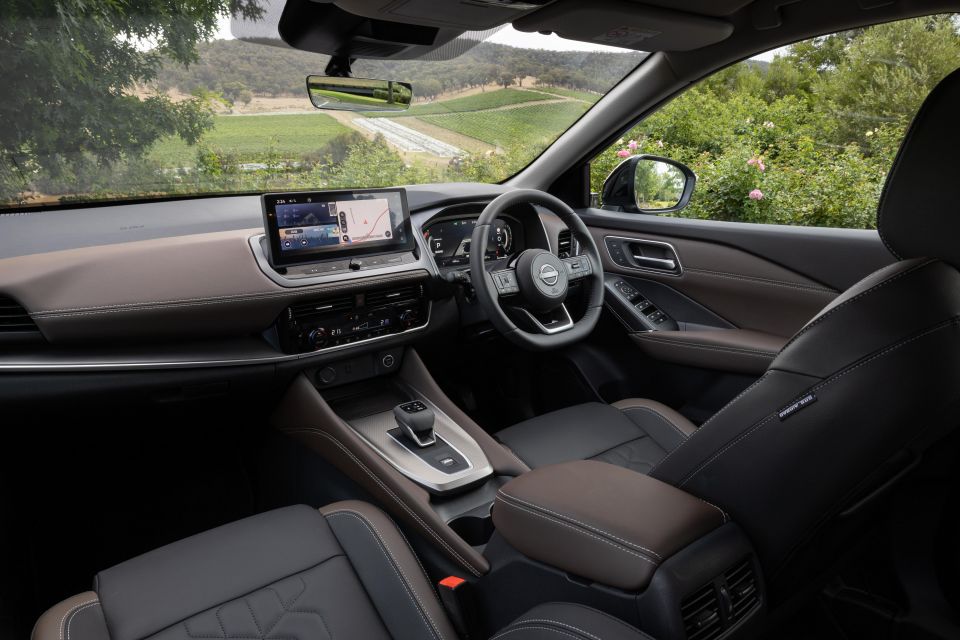
With that said, e-Power variants pack far more performance. Just get your facts straight before explaining the badge to friends at the pub.
There’s no real dud in the range, making the Qashqai my pick of the segment at just about any price point. However, the mid-spec Ti is our pick of this exceptional bunch.
While e-Power is great, you don’t need to spend $50k-plus to appreciate what the Qashqai has to offer. The Ti comes with a serviceable mechanical package and the standard kit you’ll ever need, including a heated steering wheel, heated seats, the bigger instrument display, customisable ambient lighting, an electric driver’s seat, and lovely two-tone leather upholstery.
Don’t forget that new 10-year, 300,000km warranty either. And reasonable fixed-price servicing.
All for $42,965 plus on-roads – bargain. The only caveat? Whether you trust Nissan global to turn things around and ensure a stress-free ownership experience in future.
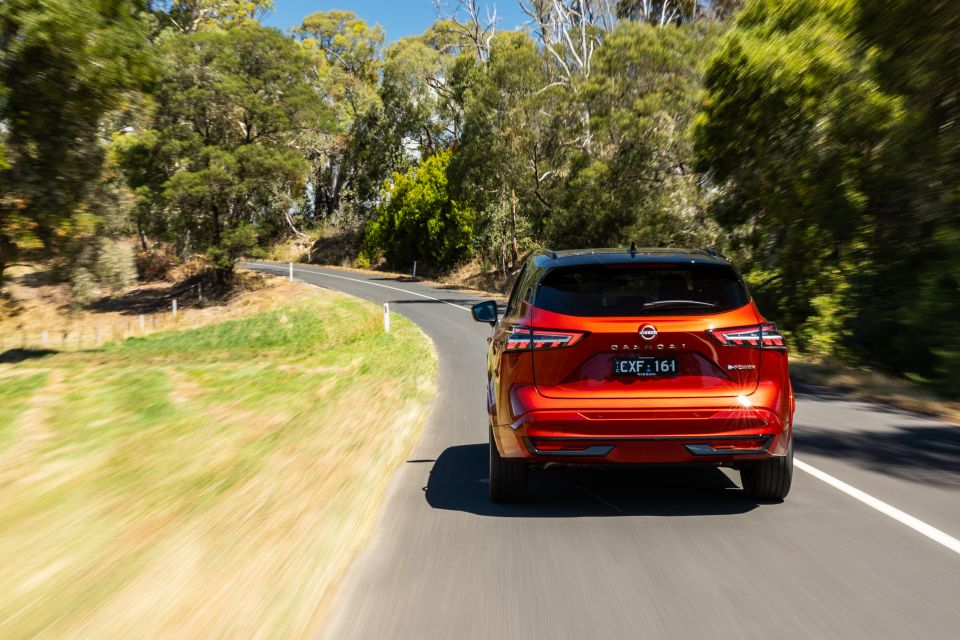
Interested in buying a Nissan Qashqai? Get in touch with one of CarExpert’s trusted dealers here
Click the images for the full gallery
Where expert car reviews meet expert car buying – CarExpert gives you trusted advice, personalised service and real savings on your next new car.
Josh Nevett is an automotive journalist based in Melbourne, Australia. Josh studied journalism at The University of Melbourne and has a passion for performance cars, especially those of the 2000s. Away from the office you will either find him on the cricket field or at the MCG cheering on his beloved Melbourne Demons.


Anthony Crawford
5 Days Ago
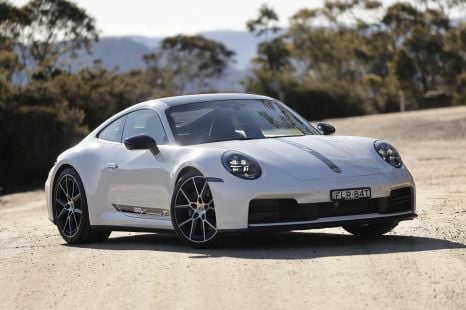

Matt Campbell
4 Days Ago
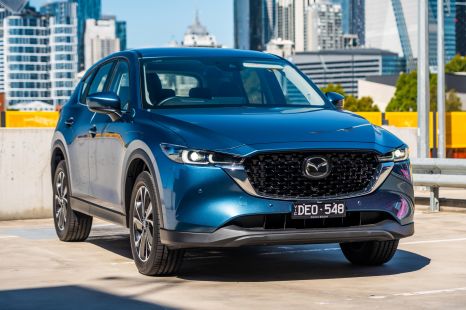

James Wong
3 Days Ago
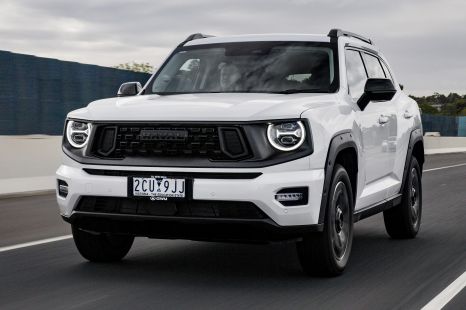

Max Davies
2 Days Ago
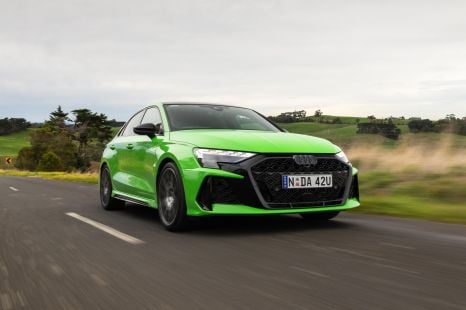

Josh Nevett
23 Hours Ago
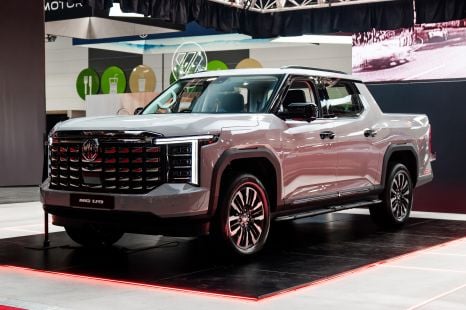

Damion Smy
17 Hours Ago